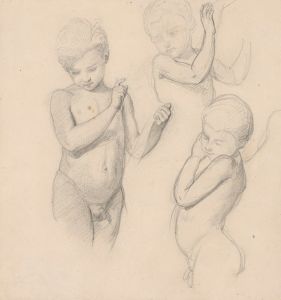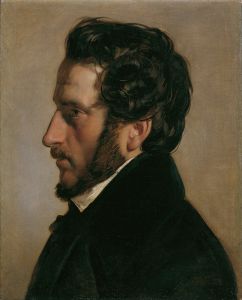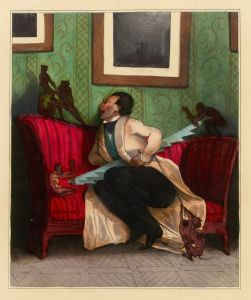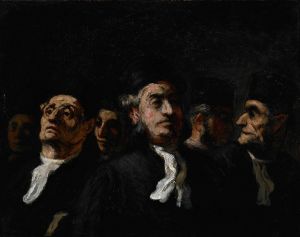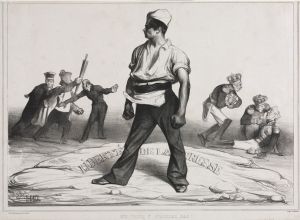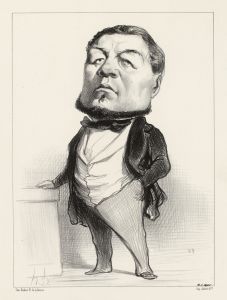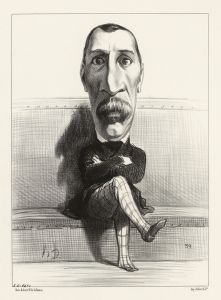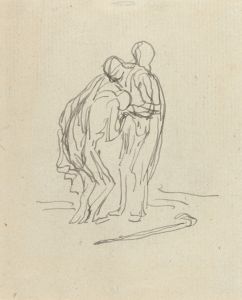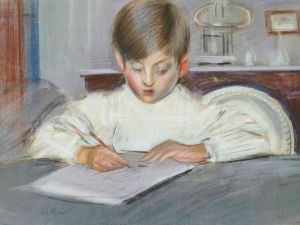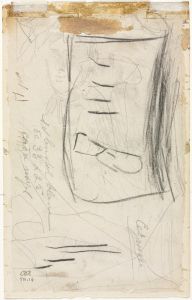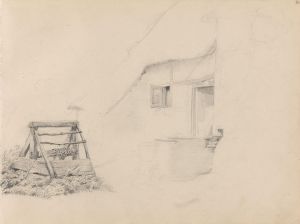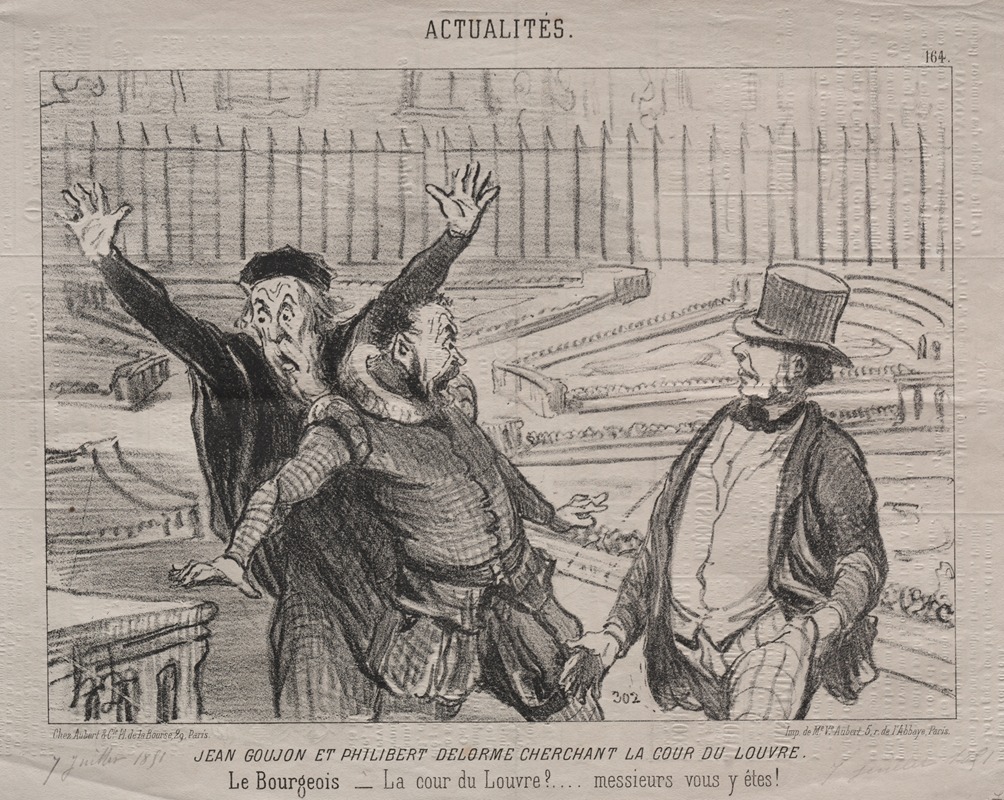
Jean Goujon and Philibert Delorme Looking for the Courtyard of the Louvre
A hand-painted replica of Honoré Daumier’s masterpiece Jean Goujon and Philibert Delorme Looking for the Courtyard of the Louvre, meticulously crafted by professional artists to capture the true essence of the original. Each piece is created with museum-quality canvas and rare mineral pigments, carefully painted by experienced artists with delicate brushstrokes and rich, layered colors to perfectly recreate the texture of the original artwork. Unlike machine-printed reproductions, this hand-painted version brings the painting to life, infused with the artist’s emotions and skill in every stroke. Whether for personal collection or home decoration, it instantly elevates the artistic atmosphere of any space.
Honoré Daumier, a prominent 19th-century French artist, is renowned for his satirical caricatures and paintings that often critiqued the social and political landscape of his time. One of his lesser-known works, "Jean Goujon and Philibert Delorme Looking for the Courtyard of the Louvre," reflects Daumier's interest in historical figures and architectural themes, although specific details about this painting are scarce.
Jean Goujon and Philibert Delorme were significant figures in French Renaissance architecture and sculpture. Goujon, a celebrated sculptor, is best known for his work on the Fontaine des Innocents and his contributions to the decoration of the Louvre. His style is characterized by elegant figures and a refined sense of proportion, which became influential in French art. Philibert Delorme, on the other hand, was an architect who played a crucial role in developing French Renaissance architecture. He is credited with introducing the use of the classical orders in French architecture and designing several notable buildings, including parts of the Tuileries Palace.
The Louvre, originally a fortress built in the late 12th century, was transformed into a royal palace by successive French kings. During the Renaissance, it underwent significant renovations and expansions, with contributions from artists and architects like Goujon and Delorme. Their work helped shape the Louvre into a symbol of French cultural and artistic achievement.
Daumier's painting, while not as widely recognized as some of his other works, likely captures the essence of these two historical figures in the context of their contributions to the Louvre. The painting may depict Goujon and Delorme in a moment of contemplation or discussion, reflecting on their work and its impact on the iconic structure. This theme aligns with Daumier's interest in portraying historical and contemporary figures with a sense of realism and depth.
Daumier's artistic style is characterized by his keen observation of human nature and his ability to convey emotion and character through expressive brushwork and composition. Although primarily known for his lithographs and caricatures, his paintings also demonstrate his skill in capturing the subtleties of human interaction and the complexities of social and historical themes.
While specific details about "Jean Goujon and Philibert Delorme Looking for the Courtyard of the Louvre" are limited, the painting can be appreciated within the broader context of Daumier's work and his interest in historical subjects. It serves as a testament to the enduring legacy of Goujon and Delorme and their contributions to one of the world's most famous cultural landmarks.
In summary, Honoré Daumier's painting of Jean Goujon and Philibert Delorme reflects his fascination with historical figures and their impact on French art and architecture. Although not much is known about the painting itself, it is a part of Daumier's broader oeuvre that explores themes of history, culture, and human nature.





